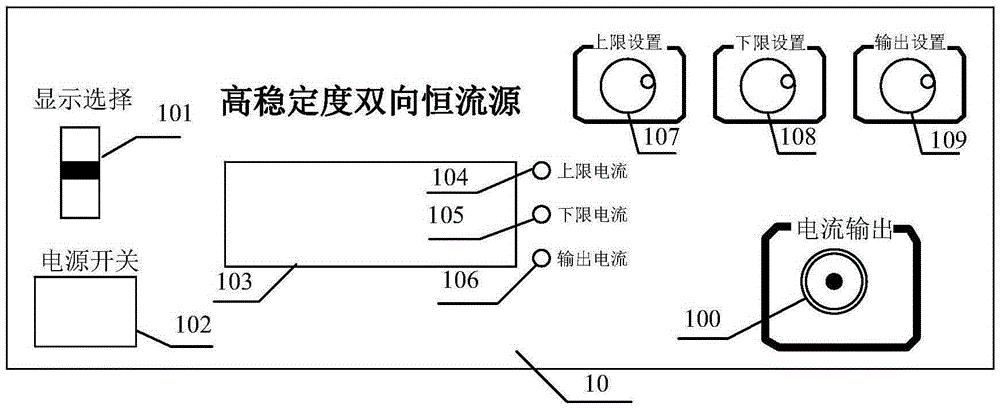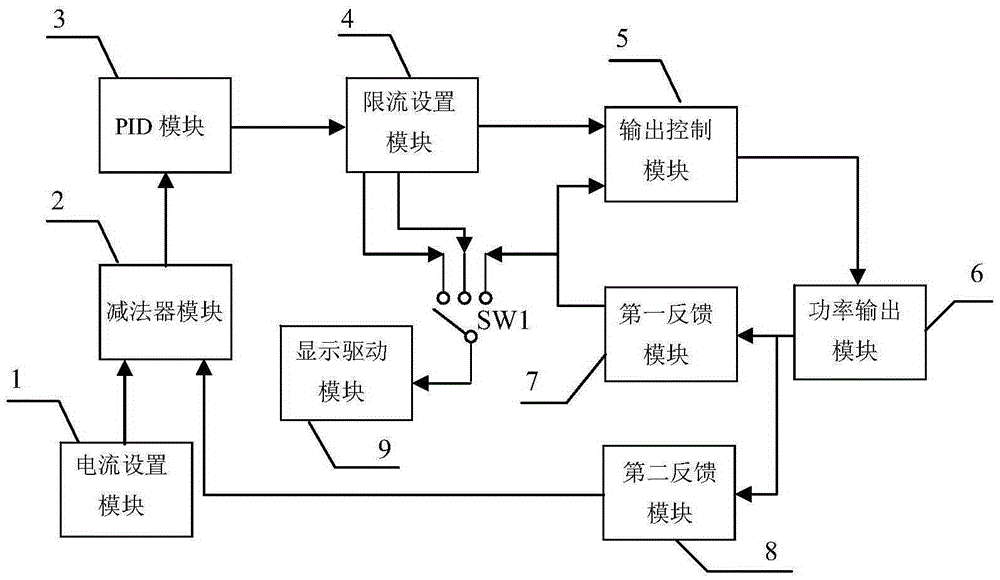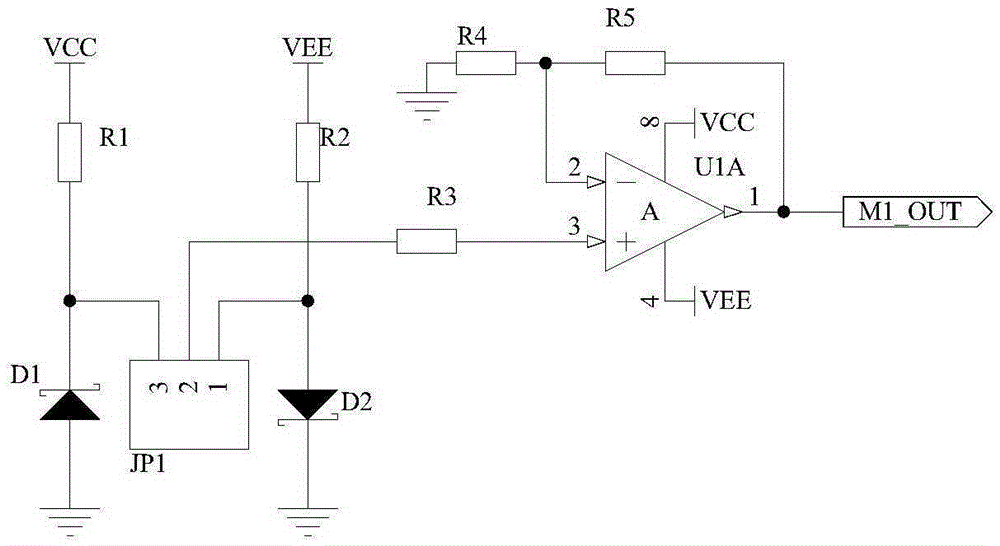Bi-directional constant current source device based on dual negative feedback control
A negative feedback, constant current source technology, applied in the field of electronics, can solve problems such as easily damaged loads and circuits, small output current, and constant current source losing the ability to automatically stabilize
- Summary
- Abstract
- Description
- Claims
- Application Information
AI Technical Summary
Problems solved by technology
Method used
Image
Examples
Embodiment 1
[0038] Embodiment 1 Overall structure of the present invention
[0039] combine figure 2 The overall working principle of a bidirectional constant current source circuit of the present invention is described. A reference voltage is set through the current setting module 1, and the second feedback module 8 samples the output current and converts it into a corresponding voltage. The above two voltages are differenced in the subtractor module 2, and the difference is sent to the PID module 3 for PID Operation, the result of the operation is sent to the current limiting setting module 4, and the output value of the current limiting setting module 4 is sent to the control input terminal of the output control module 5 as a control voltage, compared with the feedback voltage of the first feedback module 7, and the output value is controlled The power output module 6 outputs current. Since the whole system is in a double negative feedback working state, the output current will chang...
Embodiment 2
[0040] Embodiment 2 The current setting module 1 of the present invention
[0041] The principle circuit of the current setting module 1 of the present invention is as image 3As shown, one end of the resistor R1 is connected to the power supply VCC, the other end is connected to the cathode of the Zener diode D1 and pin 3 of the 3-core interface JP1, the anode of the Zener diode D1 is grounded, one end of the resistor R2 is connected to the power supply VEE, and the other end is connected to the regulator The anode of diode D2 and pin 1 of 3-core interface JP1, the cathode of Zener diode D2 are grounded, the 2 pin of 3-core interface JP1 is connected to one end of resistor R3, and the other end of resistor R3 is connected to the non-inverting input terminal of op amp U1A, op amp The inverting input terminal of U1A is connected to one end of resistor R4 and one end of resistor R5, the other end of resistor R4 is grounded, the other end of resistor R5 is connected to the output...
Embodiment 3
[0043] Embodiment 3 Subtractor module 2
[0044] The principle circuit of subtractor module 2 of the present invention is as Figure 4 As shown, one end of the resistor R6 is used as an input end of the subtractor module 2, which is recorded as the port M2_IN2, and the inverting input terminal of the operational amplifier U1B is connected to the other end of the resistor R6 and one end of the resistor R9, and the other end of the resistor R9 is connected to the operational amplifier. The output terminal of U1B, one end of the resistor R7 is used as the other input terminal of the subtractor module 2, denoted as port M2_IN1, the non-inverting input terminal of the operational amplifier U1B is connected to the other end of the resistor R7 and one end of the resistor R8, and the other end of the resistor R8 is grounded , the output terminal of the operational amplifier U1B is used as the output terminal of the subtractor module 2, which is recorded as the port M2_OUT, and connect...
PUM
| Property | Measurement | Unit |
|---|---|---|
| Capacitance | aaaaa | aaaaa |
| Capacitance | aaaaa | aaaaa |
| Capacitance | aaaaa | aaaaa |
Abstract
Description
Claims
Application Information
 Login to View More
Login to View More - R&D
- Intellectual Property
- Life Sciences
- Materials
- Tech Scout
- Unparalleled Data Quality
- Higher Quality Content
- 60% Fewer Hallucinations
Browse by: Latest US Patents, China's latest patents, Technical Efficacy Thesaurus, Application Domain, Technology Topic, Popular Technical Reports.
© 2025 PatSnap. All rights reserved.Legal|Privacy policy|Modern Slavery Act Transparency Statement|Sitemap|About US| Contact US: help@patsnap.com



